Day 2 :
- Plenary Talk
Location: The Five Spot Room
Session Introduction
Alexander G Ramm
Kansas State University, USA
Title: Wave scattering by many small impedance particles and creating materials with a desired refraction coeffcient
Time : 09:45-10:45

Biography:
Alexander G Ramm was born in USSR and emigrated to USA in 1979. he is a US citizen, professor of mathematics at KSU, an author of more than 660 papers in mathematical and physical Journals, of 15 monographs, and an editor of 3 books. His scientific interests include differential and integral equations, operator theory, mathematical physics, especially scattering theory and inverse problems, numerical analysis, especially methods for solving ill-posed problems, various problems of applied mathematics and theoretical engineering. Professor A.G.Ramm was awarded many honors, including Fulbright Research Professorships in Israel and Ukraine, Mercator Professorship, NATO and DAAD professorships and grants, Khwarizmi international award, distinguished professorships in some countries and distinguished lectureships of London Mathematical Society and Hong Kong Mechanical society, and many other honors and awards. He gave invited plenary talks at many conferences throughout the world.
Abstract:
The theory of acoustic and electromagnetic (EM) wave scattering by one and many small impedance particles of arbitrary shapes is developed. The basic assumptions are: a << d <<λ, where ‘a’ is the characteristic size of particles, ‘d’ is the smallest distance between the neighboring particles, ‘λ’ is the wavelength.
This theory allows one to give a recipe for creating materials with a desired refraction coefficient.
- One can create material with negative refraction: the group velocity in this material is directed opposite to the phase velocity.
- One can create a material with a desired permeability.
- Equation is derived for the EM field in the medium in which many small impedance particles are embedded.
- Similar results are obtained in [6] for heat transfer in the media in which many small particles are distributed.
The theory presented in this talk is developed in [1]-[6].
REFERENCES:
[1] A.G.Ramm, Scattering of acoustic and electromagnetic waves by small bodies of arbitrary shapes. Applications to creating new engineered materials, Momentum Press, New York, 2013.
[2] A.G.Ramm, Many-body wave scattering problems in the case of small scatterers, J. of Appl. Math and Comput., (JAMC), 41, N1, (2013),473-500.
[3] A.G.Ramm, Scattering of electromagnetic waves by many nano-wires, Mathematics, 1, (2013), 89-99. Open access Journal: http://www.mdpi.com/journal/mathematics
[4] A.G.Ramm, Wave scattering by many small bodies: transmission boundary conditions, Reports on Math. Physics, 71, N3, (2013), 279-290.
[5] A.G.Ramm, Scattering of EM waves by many small perfectly conducting or impedance bodies, J. Math. Phys. (JMP), 56, N9, 091901, (2015).
[6] A.G.Ramm, Heat transfer in complex medium, In the book "The foundation of chaos revisited: from Poincare to recent advances", Editor C. Skiadas, Springer, 2016, pp. 119-136.
- Materials Science & Engineering | Nanotechnology in Materials Science | Surface Science and Engineering
Location: The Five Spot Room

Chair
Sampath kumar M C
B.M.S College of engineering Bangalore, India
Session Introduction
Davoud Dastan
Cornell University, USA
Title: Flexible organic field effect transistors with enhanced electrical properties
Time : 11:05-11:25

Biography:
Davoud Dastan has his expertise in the area of materials science. His expertise in materials science includes synthesis, characterization of nanomaterials for energy applications. He has the experience of synthesizing semiconductor oxides nanoparticles and thin films, fabricating solar cells, metal-insulator-semiconductors (MIS) structures, and organic field effect transistors using hybrid materials such as organic/inorganic materials. He has got several competitive grants during his research and has an ever growing potential for exploring his interest in materials science and nanotechnology.
Abstract:
Bottom-gate top-contact organic field effect transistors (OFET’s) have been fabricated on flexible substrates. Organic/inorganic materials are used as gate dielectric to enhance the output and transfer characteristics of the fabricated devices. Rutile titania nanoparticles (NP’s) were prepared using solvothermal technique and incorporated into poly vinyl alcohol (PVA) to improve the capacitance and therefore dielectric constant of the host matrix. The composite films were exposed to ozone treatment and the gold contacts were thermally made on top of the films through a shadow mask. The gate dielectric was treated with a self-assembled monolayer (SAM) of octadecyltrichlorosilane (OTS) and then an active layer of copper phthalocyanine (CuPc6) was deposited on top of the films. The output and transfer characteristics of the fabricated FET’s were measured using semiconductor parameter analyzer. OFET’s treated with a SAM of OTS exhibited higher mobility, on-off current ratio, and lower threshold voltage than the devices without a SAM of OTS treatment.
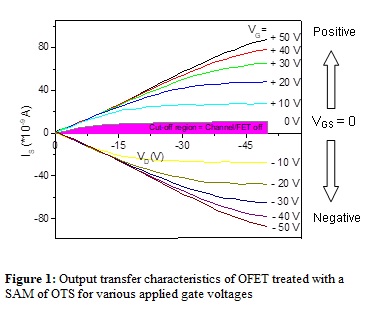
Daniela Penther
Technische Universität Berlin, Germany
Title: Microstructural characterization of Mg-SiC nanocomposites produced by powder metallurgy techniques
Time : 11:25-11:45

Biography:
Daniela Penther has her expertise in powder metallurgy techniques including high energy ball milling, diverse pressing techniques and sintering of metals. She started studying and analyzing composites by SEM (EDS, EBSD), XRD and TEM during her diploma thesis in the collaborative research centre “TRIP-Matrix-Composite” supported by German Research foundation (DFG) at TU Bergakademie Freiberg, Germany. During her PhD she is currently producing Mg-SiC nanocomposites by powder metallurgy techniques and analyzing their microstructure as well as their fatigue behavior in a project supported by DFG at Technische Universität Berlin, Germany.
Abstract:
In the present study, the microstructure of newly developed magnesium matrix composites reinforced with SiC nanoparticles was investigated. To produce Mg-SiC nanocomposites, magnesium powder and various volume fractions of SiC particles with an average diameter of 50 nm were co-milled by a high energy planetary ball mill. The milled powder was compacted by a hydraulic hand-operated press followed by cold isostatic pressing and sintering. Finally, the nanocomposites were hot extruded to eliminate porosity and achieve full density. Scanning electron microscopy, energy dispersive x-ray analysis and x-ray diffraction were used to characterize the microstructure and texture of the magnesium matrix and the distribution of the SiC-reinforcements after extrusion. Further, transmission electron microscopy analyses were performed to study the grain size of the magnesium matrix and the interface between the SiC nanoparticles and the magnesium matrix. All developed nanocomposites revealed a uniform distribution of the SiC nanoparticles in the magnesium matrix. No evidence of porosity or interfacial products between the SiC nanoparticles and the magnesium matrix were found, indicating a well-bonded interface. The used powder metallurgy techniques allow to produce dense nanostructured Mg-SiC nanocomposites.
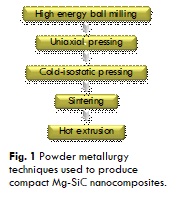
John O Adongo
Humboldt-Universität zu Berlin, Germany
Title: Fabrication of surfaces modified with carboxymethylthio ligands towards chelate-assisted trace-level extraction of copper
Time : 11:45-12:05

Biography:
John Onyango Adongo is a doctoral candidate registered at Humboldt-Universität zu Berlin, Germany. He conducts collaborative research within the surface sciences group of Dr. Jörg Rappich based at the Institut für Si-Photovoltaik, Helmholtz-Zentrum Berlin für Materialien und Energie GmbH (HZB). He currently holds a tutorial fellow position at the chemistry department, Egerton University, Kenya. As a material scientist, his doctoral research focusses on the design, fabrication and testing of potentially renewable HMI – chelating surfaces incorporating silicon as the substrate material. The approach for functionalizing substrate surfaces majorly involves the facile electrografting method achieved via electroreduction of aryl diazonium salts.
Abstract:
Statement of the Problem: Copper (Cu) is an essential metal in biological systems; however, at concentrations beyond threshold limits, it can become highly toxic to humans and aquatic organisms. Excessive Cu in the blood has been associated with the Wilson’s disease. Copper can bind onto certain organic ligands via coordination mechanisms. Electrochemical grafting of aryl diazonium derivatives have successfully been used to modify substrates by introducing layers of various organic functional groups onto metallic and semiconducting substrate surfaces.
1 Strategies involving functionalization of substrates with large-molecular-weight oligomers and peptides via diazonium grafting routes for extraction of heavy metal ion (HMI) pollutants have been reported. Some of these methods involve introduction of chelating groups in more than a single step. However, a simpler one-step quick grafting of low-molecular-weight HMI - chelating agents may not only present some cost reduction advantages towards devising kits for HMI extraction but also permit the fabrication of thinner layers with optimal surface grafting and excellent chelation efficiency. Silicon is one of the most abundant materials on the earth’s crust and its suitable surface chemistry has motivated organic functionalization efforts towards developing a wide range of applications. The purpose of this study is to explore a one-step functionalization strategy for introducing carboxymethylthio (CMT) chelating groups via direct electrografting of the diazonium cation 4-[(carboxymethyl)thio]benzenediazonium cation, (4-CMTBD), onto Si surface, leading to fabrication of the Si-(4-CMTB) surface. The investigation of Cu chelation is also studied. Findings: The fabricated surface, Si-(4-CMTB), is capable of chelating Cu ions from aqueous solutions at trace amounts as shown by Raman spectroscopy.
2 Conclusion & Significance: Chelate functionalized Si surfaces may be of potential engineering interests for HMI sensing and/or extraction. This study offers positive contributions in the fields of environmental protection, forensic diagnostics, biosensing, and mineral prospecting among other related disciplines.
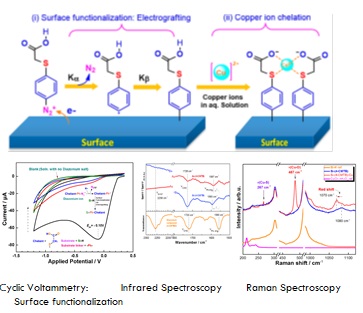
Juliano Schorne Pinto
Université de Toulouse, France
Title: Thermal-structural and elemental analysis of Cu-Fe-O system coupled with available thermodynamic modeling
Time : 12:05-12:25

Biography:
Juliano Schorne Pinto is a Ph.D. student at Université de Toulouse and research associate at the CIRIMAT and Laboratoire de Génie Chimique. He has obtained his Master's degree in Materials Science and Engineering at Université of Montpellier (France) and bachelor’s degree in Materials Engineering from the Federal University of Rio Grande do Sul (Brazil). He has experience in the synthesis and characterization of nanostructured materials with photocatalytic activities, carbon nanotubes and thermodynamic modeling of systems using the CALPHAD method.
Abstract:
The Cu-Fe-O system has a great technological interest in the copper industry, as well as the development of catalytic compounds and transparent devices. The CuFeO2 phase (delafossite) and CuxFe3-xO4 phase (spinel) exhibit remarkable electrical, magnetic, optical and optoelectrical properties. Therefore, an in-depth understanding of the stability of the delafossite structure becomes of particular interest for fundamental research and for instance, its applications to the development of efficient p-type TCOs. The purpose of this study is reviewed the structural and thermodynamic information and phase equilibria of the Cu-Fe-O system in addition to checking the consistency of the available thermodynamics models with the experimental data. First, several of these models based on the CALPHAD method were reviewed and differences were highlighted. Moreover, several experimental procedures were employed to establish the relationships among temperature, lattice parameter, and stoichiometry of mixed oxides. In situ HT-XRD (High-temperature X-Ray Diffraction) and TGA/DTA measurements, Rietveld refinement were used to provide thermo-structural information in the range of 50° to 1100°C from stoichiometric mixture of CuO and Fe2O3 single oxides. Plasma Sintering (SPS) followed by adjusted post-annealing treatments were used to stabilize delafossite phase in different Copper/Iron gradient and analyzed by Electron Probe Micro-Analyzer (EPMA). The HT-XRD demonstrated that the spinel phase started to be formed from 750° and increases the amount of Cu after 900°C (CuxFe3-xO4). In addition, the variation of lattice parameters of spinel phase was determined by Rietveld refinement and compared with those of different molar ratios. Contrary to all the models, EPMA coupled with local structural analysis showed that delafossite phase could be stabilized with a substantial degree of cationic non-stoichiometry. These results were related to available thermodynamics models providing an improved understanding of this system, new information has generated to implement the existing data. The need to develop and improve a new model is considered.
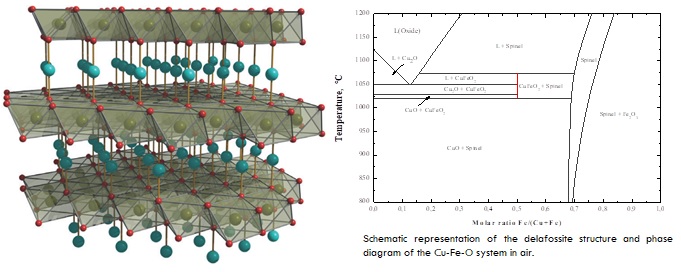
Lunch Break 12:45-13:45 @ Renaissance III
- Poster Presentations
Location: Pre-Function Space
Session Introduction
Tamara Florian
Clausthal University of Technology, Germany
Title: MSE-01: Online monitoring of the filling behavior of highly-filled polymeric materials during the injection molding process

Biography:
Tamara Florian graduated 2010 at the Munich University of Applied Sciences in the field of process engineering. Since then, she is working at the Institute of Polymer Materials and Plastics Engineering in the field of processing and functionalization of thermoplastic materials. She is mainly concerned with the development of new, functional materials and their processing properties in the injection molding process. Apart from the consideration of the properties in conventional injection molding, Ms. Florian is particularly concerned with the micro-injection molding technique
Abstract:
In the field of micro systems technology, e.g. for sensors or actuator applications, polymeric materials with functional properties (e.g. electrical conductivity or magnetic properties) are an interesting alternative to common metallic materials due to their high-efficient fabrication techniques. The desired functional property spectrum is often realized by addition of functional fillers, which inevitably influences the injection molding process. Especially the flow-ability and the mold filling behavior change dramatically due to the fillers. This behavior is critical for the quality of the final part, but cannot be predicted sufficiently until now. At present, the current standard process monitoring technologies are not adequate to provide enough information to analyze and optimize the filling behavior.
In the presented study, the flow behavior of the highly-filled polymeric materials is characterized with a glass-insert mold which is designed for direct visual analysis of the flow phenomena. The investigation is carried out using polyamide (PA 6) with ferrite micro particles of 150µm size. These particles are admixed to the polymer matrix with filler contents of 50 vol.-%, 60 vol.-% and 65 vol.-%, respectively. The flow front is observed during the filling stage with a high-speed camera. The filling behavior is simulated with commercial software (Mold Flow®), and validated with the real experiment. Based on these investigation, the processability of highly filled polymer melts are characterized both by experiment and simulation, with evaluation of the conventional simulation tools for application in highly-filled polymeric materials.
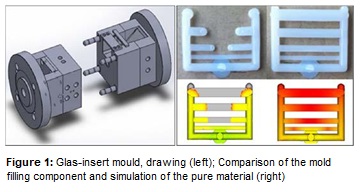
Hae Jin Kim
Hanyang University, Republic of Korea
Title: MSE-02: Angiogenesis depression effect; a cure for glioblastoma multiforme through oral administration by lactoferrin-glycyrrhizin conjugate, as HMGB1 antagonist

Biography:
Hae Jin Kim graduated from Sejong University, Department of Bioengineering at the age of 24, and progressed to master’s course in Hanyang University. She is mainly working on cancer. In particularly, she studies the development of newly drug for the treatment of brain cancer and improving the method of administration. She has identified that the prognosis of disease is poor because drug delivery to the brain was difficult by blood-brain barrier. To improve this problem, she synthesized novel material for convenient administration method and targeting effect to the brain.
Abstract:
Glioblastoma multiforme (GBM) is one of the most common and aggressive brain tumors in humans. Recently, to cure GBM clinically, antiangiogenic therapy with medications such as Avastin is tried to slow the GBM growth. However, this drug can induce some side effects like stroke and kidney problem. To improve this problem, we newly developed an orally absorbable glycyrrhizin (GL) that can bind to HMGB1 and overexpression of HMGB1 induces angiogenesis on the tumor tissue. Also, we conjugated GL with Lactoferrin (Lf) for oral administration, Lf can be absorbed by receptor (Lf-R) that is expressed on the small intestine, blood-brain barrier (BBB) and glioma cell. We expected potential of GBM region targeting and anti-angiogenesis via HMGB1 capturing, when the lactoferrin and glycyrrhizin (Lf-GL) was orally administered. Through this research, we confirmed that conjugation between the Lf-GL, which had increasing HMGB1 binding affinity. In addition, this material showed effect that is growth inhibition of GBM spheroid and anti-angiogenesis and vascular regression on the in vitro model. And then, we preferentially confirmed effect of LF-GL on cancer tissue in the xenograft mouse model and proceeded experiments to confirm anti-angiogenesis and possibility of orally absorbable in the GBM orthotopic mouse model. consequently, these results demonstrated that the Lf-GL would be a novel drug for the effective treatment of brain tumor.
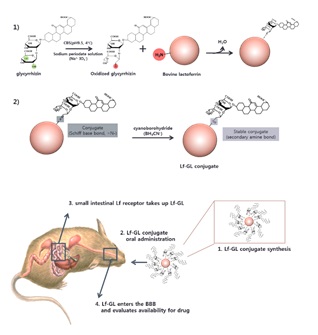
Sijin Park
Hanyang University, Republic of Korea
Title: MSE-03: Colorimetric contact lens type sensor consisting of cerium oxide nanoparticles and glucose oxidase for tear glucose detection

Biography:
Sijin Park graduated from Hanyang University, Department of Bioengineering at the age of 24, and progressed to master’s course. She is mainly working on diabetes. In particularly, she studies the development of glucose sensors for the management of blood glucose in diabetic patients. She has identified the disadvantages of the Fingerprick test, which is currently the most commonly used method, and invented a breakthrough method to overcome the drawbacks. Instead of measuring blood in the fingertips, she has developed a method for sensing blood glucose non-invasively through glucose concentration in the tear
Abstract:
A contact lens is ideal to monitor glucose levels in tear. We designed a contact lens-based biosensor comprised of glucose oxidase (GOX) and cerium oxide nanoparticle (CNP) to detect glucose levels in tear. GOX catalyzes the oxidation of glucose to hydrogen peroxide (H2O2) and gluconolactone. Then, CNP catalyzes the reduction of H2O2. At this moment, Ce3+ being colorless shift to Ce4+ state that is shown yellow color. Glucose levels can be determined by analyzing the change of color. B value of RGB color is used to determine glucose levels, being shown the correlation with glucose concentration. To confirm the synthesized CNP structure, we perform the XPS, XRD, HR-TEM. GOX is immobilized on a modified-CNP using PEG spacer; it is CNP-PEG-GOX. The formation of CNP-PEG-GOX is determine via quantitative analysis of GOX. The contact lens sensor maintains its mechanical properties compared with HEMA contact lens. and has correlation with glucose levels in buffer and artificial tear.
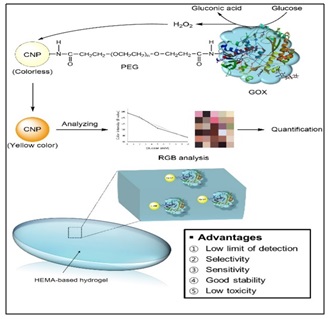
Antoine Barnabe
CIRIMAT – Université de Toulouse III Paul Sabatier, France
Title: MSE-04: Periodic nanostructures obtained by spinodal decomposition at low temperature on Co1.7Fe1.3O4 thin films prepared by radio frequency sputtering

Biography:
Antoine Barnabé is a professor at the CIRIMAT laboratory (Mixed Oxide Valency research group), Paul Sabatier University, France. He received his PhD degree in chemistry of materials from University de Caen-Basse Normandie (France) in 1999. He held a post-doctoral position in Northwestern University, Evanston (USA), in 2000. His current research interests are mainly focused in functional metal oxide powders, ceramics and thin films prepared by PVD technique. He first worked on TEM characterization of giant magnetoresistance manganites then moves to complex oxides with new optoelectronic properties. For the last decade, he has developed transparent conductive oxides (n- and p-type) and gas-sensing layers for the CO2 detection sputtered oxide thin films. He’s in charge on the SEM/TEM/EPMA/SIMS characterization center R. CASTAING in Toulouse. To date, all these works have led to 63 publications, 2 patents, and more than 80 communications (hindex = 22, sum of the times cited > 1400).
Abstract:
Inside a miscibility gap of a phase diagram, a homogeneous solid solution is not stable and progressively broken down into two different phases either by nucleation/growth or spinodal decomposition. Spinodal transformation which only operates in a limited area of the gap, can induce periodic microstructures at a submicronic scale. When they contain at least a magnetic ordered phase, such microstructures could then be a key step in the quest for materials with original properties such as giant magnetoresistance, and/or magnonic crystal which are likely to find new technological applications.
In the CoFe2O4–Co3O4 phase diagram there is a miscibility gap in which spinodal decomposition can lead to regular alternation of ordered magnetic phases made of spinel oxides. This was mainly observed in powders. In the context of potential future applications, it is however necessary to be able to prepare thin films and to induce in them spinodal decomposition at low temperatures. The purpose of this study is devoted to 1) the preparation of Co1.7Fe1.3O4 spinel iron cobaltite thin films on cheap substrate, 2) the structuration at the nanoscale by spinodal transformation at moderate temperatures and 3) the characterization at the nanoscale on the spinodal transformation.
Pure thin films of Co1.7Fe1.3O4 spinel iron cobaltites were prepared by rf sputtering. The two-phase spinels obtained through the spinodal transformation were evidenced after annealing in air at low temperature by XRD/TEM/Raman/Mossbauer/electrical measurements studies. Specific in-plane sections elaborated by FIB were carried out and analyzed by high resolution TEM studies coupled with EELS/EDS/STEM elemental analysis at the atomic scale.
From the present work it can then be concluded that the preparation of Co1.7Fe1.3O4 thin films structured by spinodal transformation could be obtained at temperatures compatible with the use of cheap substrates.
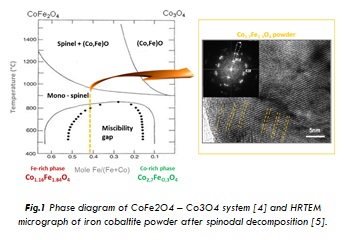
Chung Wung Bark
Gachon University, Republic of Korea
Title: MSE-05: Effects of doping ratio of cobalt and iron on the structure and optical properties of ferroelectric bismuth titanates

Biography:
Chung Wung Bark has completed his PhD from POSTECH, Korea and postdoctoral studies from University of Wisconsin-Madison, USA. He has published more than 150 papers in SCI journals and has been serving as a guest editorial board member.
Abstract:
The wide band gap of complex oxides is one of the major obstacles limiting their use in photovoltaic cells. Tunability of the bandgap for ferroelectric complex oxides is one of the key issues for photovoltaic applications. We report doped ferroelectric oxides with narrow bandgaps and photovoltaic effect. To identify an effective route for tailoring the band gap of complex oxides, this study examined the effects of cobalt and iron doping on lanthanum-modified Bi4Ti3O12-based oxides synthesized using a solid reaction. The structural and optical properties were analyzed by X-ray diffraction and ultraviolet-visible absorption spectroscopy. As a result, the optimal iron to cobalt doping ratio in bismuth titanate powder resulted in ~1.94eV decrease in the optical band gap. In the film form, the optical bandgaps of Co-doped Bi3.25 La0.25 Ti4O12 (BLT) and Fe, Co- doped BLT films was narrower than that of non-doped BLT by more than 1 eV. Correlated with the bandgap reduction, the Fe,Co-doped BLT film shows largely enhanced the photocurrent density by 25 times that of than BLT films. The density functional theory (DFT) calculation confirms that intermixed transition metal dopants (Fe, Co) in BLT generate novel energy states under conduction band. This new route to reduce the optical bandgap can be adapted to the synthesis of other complex oxides. This approach to tune the bandgap by simple doping could be applied to other wide-bandgap materials, which have the potential to be used in solar energy conversion or optoelectronic applications.
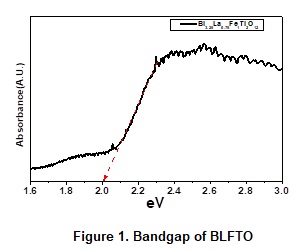
Hyung Wook Choi
Gachon University, Republic of Korea
Title: MSE-06: Characterization and analysis of phosphor condition with electrode of perovskite solar cells

Biography:
Hyung Wook Choi has completed his PhD from Yonsei University, Korea and postdoctoral studies from Pennsylvania State University, USA. He has published more than 100 papers in SCI journals.
Abstract:
Nowadays, solar cells of silicon have reached efficiencies of up to 25% for single crystal Si. But, the production of such material requires energetically demanding processes and relatively expensive production. Recently, a new class of perovskite was introduced as light harvesting material, showing strong absorption in a broad region of the visible spectrum, good electron and hole conductivity, delivering also high open circuit voltages in photovoltaic devices. The main advantage of such an organic-inorganic hybrid material is a high absorption coefficient, excellent long distance carriers to move the hole diffusion length. Mixed halide perovskite materials, which electron hole diffusion length is ten times longer than those only containing iodide. Which presents efficient charge transport, low recombination rates and also good pore filling of the TiO2 layer enhancing device performance with respect to Spiro-OMeTAD (HTM). Trivalent rare-earth (RE) ions activated materials have kept booming in the past decades owing to their wonderful applications in phosphor-converted white light-emitting diodes (WLEDs), solar cells, temperature sensors, and drug deliveries. RE ion-doped inorganic phosphors revealed intense luminescent properties and showed potential applications in WLEDs. The conversion luminescence of a phosphor from the ultraviolet region to the visible region can enhance the light harvesting in Perovskite solar cells (PSCs), because many perovskites can only absorb visible light. In this work, to explore the influence of phosphor additives on the conversion efficiency of PSC, we introduce the YAG:Ce3+ phosphor layer. The samples were characterized by XRD, SEM, UV–vis, PL and IV-curves. Photoelectrode DSSC with light-to-electric energy conversion efficiency was achieved under a simulated solar light irradiation of 100 mW/cm2 (AM 1.5).
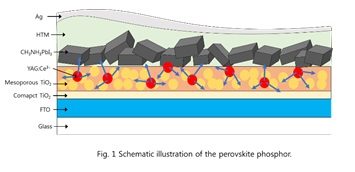
Takumi Namba
Tokyo University of Science, Japan
Title: MSE-07: Preparation of oxide semiconductors thin films for the transparent electrode by helicon-wave excited plasma sputtering method

Biography:
Takumi Namba was received the Bachelar of Engineering degree in electrical engineering from Tokyo University of Science, Tokyo Japan, in 2016. He is now a master course student of Graduate School of Engineering in Tokyo University of Science. His research interest iclude development of oxide compound thin film solar cells as the earth eco-friendly next generation solar cells.
Abstract:
Silicon (Si)-based solar cells have a market share of more than 90%, and are expanding in this market. However, high purity Si is very expensive and would be the risks of short supply and price fluctuation. Recently, Cu(Inï½¥Ga)Se2(CIGS) based thin film solar cells have been attracted as high conversion efficiency as a high efficiency thin film solar cell of the next generation and achieved the highest conversion efficiency of 20% over. The top electrode material for CICS based solar cell is widely used ZnO:Al and is required to be low resistivity (under 10-3 Ωcm) and optical transparency (larger than 80% in transmittance). Moreover, the preparation of good crystallinity ZnO:Al thin films is expected for improvement of the conversion efficiency of CIGS based solar cells.
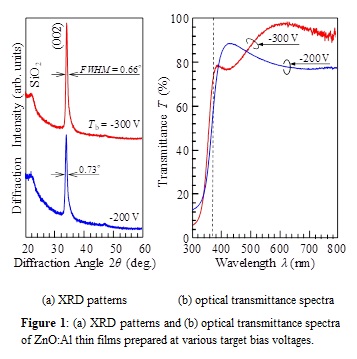
In this study, we tried to prepare ZnO:Al thin films with good crystallinity by helicon wave excited magnetron sputtering method and aimed to establish conditions for preparation. ZnO:Al thin films prepared by this method were evaluated for crystallinity, optical transmittance, and thickness by X-ray diffraction (XRD), recording spectrophotometer, and stylus surface profiler.
Figure1 shows (a) XRD patterns and (b)optical transmittance spectra of ZnO:Al thin films prepared at various the target bias voltages. RF power, substrate temperature, and deposition time were 400 W, 200 ℃, and 3 hours, respectively. ZnO:Al thin film prepared at -300 V exhibited the wurtzite structure (α-ZnO), optical absorption edge of 360 nm (3.37 eV) and good optical transparency
Yu-Shan Lee
National Chi Nan University, Republic of China
Title: MSE-08: Characterizations of ZnO nanorods and ZnO/ZnS core/shell nanorods on copper grids

Biography:
Yu-Shan Lee is a graduate student at National Chi Nan University from Taiwan and her research focus is on nano-materials. She has researched methods of growing nanorods on different substrates since she was a collage student. Owing to improvements of material properties of nanostructures novel fabrication of nanostructures may advance device technology, such as senor, panel, semiconductor and so on. In addition, she would like to acknowledge more academic researches by attending this conference. It is possible to inspire her to do more in depth investigation.
Abstract:
Zinc oxide is a n-type semiconductor which has wide and a direct band gap of 3.37ev with large exciton binding energy of 60meV. In addition, ZnO is also accessible material, which has many applications, such as transductors, gas sensors, and optical devices. However, zinc oxide has large band gap, which contributes to the efficiency of photovoltaic devices. Thus, we incorporate ZnS into ZnO structures because zinc sulfide is able to modulate band gap.
In this study, we electroplate the ZnO seed layer to cover on the copper grid as the first step. Secondly, we adopt the hydrothermal method to grow the ZnO nanorods, and then prepare the solution of zinc sulfide to do the hydrothermal method for the second time. In order to characterize the material properties, several analytical methods such as FESEM, TEM, PL and so forth have been conducted. The TEM images indicate that ZnO nanorods are completely covered by ZnS layer. The Photoluminescence (PL) analysis illustrates that this nanocomposite materials contain good optical property. In this research, to conduct the TEM analyze directly, we attempt to fabricate ZnO/ZnS core/shell nanostructure on the copper grid.
This paper provides a simple three-step process to synthesize ZnO/ZnS core/shell nanostructure and also affords a possibility to apply to optical sensor, solar cell, gas sensor and so on.
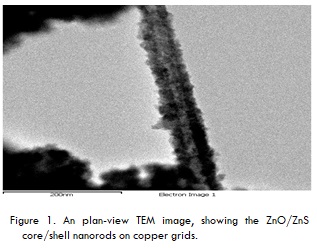
Ji Hyeon Choi
Kyungpook National University, Republic of Korea
Title: MSE-09: Fatty acid-based electrospun fiber for temperature-controlled drug release

Biography:
Ji Hyeon Choi is a first year master course student in polymer science and engineering at Kyungpook national university in Republic of Korea under professor Dong Choon Hyun. She received her B.S. degree in polymer science and engineering from the same university.
Abstract:
This paper explains fatty acid-based electrospun fibers for temperature-controlled drug release. The polymer fibers have core-sheath structure. Rhodamine B-loaded polymer particles are enclosed in the core while the sheath contains biodegradable polymer and mixture of fatty acids. The mixture consists of two fatty acids with different melting points. At a specific composition, the mixture represents a single melting point 38-40 oC which is slightly higher the normal human body temperature. This controllable melting of the mixture allows the temperature-regulated release of the dye from the fibers. Below its melting point, the mixture of fatty acids incorporated into the sheath will be in a solid state to restrict the passing of the dye molecules pre-loaded in the core whereas the molecules can be released instantly through the pores over the melting point. The release profiles of the dye molecules can be further manipulated by varying the amount of the mixture contained in the fibers.

Ju Hyang Park
Kyungpook National University, Republic of Korea
Title: MSE-10: NIR light-triggered, localized anti-cancer drug delivery using poly(ε-caprolactone) (PCL) fibers incorporated with indocyanine green and phase-changeable fatty acid

Biography:
Ju Hyang PARK is a first year doctoral course student in polymer science and engineering at kyungpook national university in republic of korea under professor Dong Choon Hyun. She received her M.S. degree and her B.S. degree in polymer science and engineering from the same university. The topic of her PhD research is "smart drug delivery system using electrospinning.
Abstract:
This paper explains a new system for NIR light-triggered release of drugs. The system consists of poly(ε-caprolactone) (PCL)-based fibers having a core loaded with doxorubicin (DOX) and a sheath incorporated with indocyanine green (ICG) as a NIR-absorbing agent together with a phase-changeable fatty acid. Upon NIR irradiation, the photothermal agent will generate heat to raise the local temperature of the fibers. When the temperature is above the melting point of the fatty acid, nano-pores will be produced in the fibers. This response to NIR irradiation allows the instant release of DOX from the fibers through the pores, leading to the significant enhancement of anticancer activity in combination with the hyperthermia effect arising from the photothermal agent.
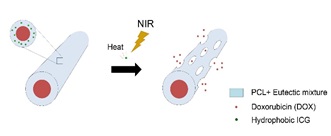
Yu-Chen Fa
National Sun Yat-sen University, Taiwan
Title: MSE-11: Chitosan-coated magnetic nanoparticles modified with folate use for doxorubicin released

Biography:
Yu-Chen Fa is studying in Institute of Medical Science and Technology, National Sun Yat-sen University. She will obtain a master's degree in June 2018. Her research focuses on the development of drug delivery devices, drug control release, remote delivery, tumor associated environment and tumor therapy. Yu-Chen Fa has her expertise in evaluation and passion in improving the clinical tumor therapy. She successfully designs a magnetic nanoparticle with low toxicity and using in tumor therapy. She also completed her research in localized photodynamic therapy to overcome multidrug resistance in breast cancer cells. The research results have been published in Bioconjugate Chemistry, 2017.
Abstract:
In clinical tumor therapy, chemotherapeutic routes have caused severe side effects; current delivery methods are unsatisfactory. Successful design of a remotely folate (FA)-grafted chitosan (CS)-coated magnetic nanoparticle (MNP) with low toxicity, has been achieved (Figure 1). A chemotherapeutic drug such as doxorubicin (DOX), is loaded in the MNP-based matrix (FA-grafted CS-DOX-TPP-MNP), which is coated by an activated target tumor molecule of FA-grafted CS biopolymer with the inclusion of tripolyphosphate (TPP) as a linker (Figure 2). The resultant nanocomplexes exhibited random aggregates (~240 nm) and zeta potential (− 24.9 mV) (Table 1). In vivo experiments using athymic BALB/c nude mice with human glioblastoma U87 cells in a subcutaneous tumor model revealed that magnetic guidance of FA-grafted CS-DOX-TPP-MNP, injected via the tail vein, significantly decreased tumor growth (Figure 3). This manuscript demonstrates the feasibility of magnetizing control of FA-grafted CS-DOX-TPP-MNP to enhance the localization of drug release.
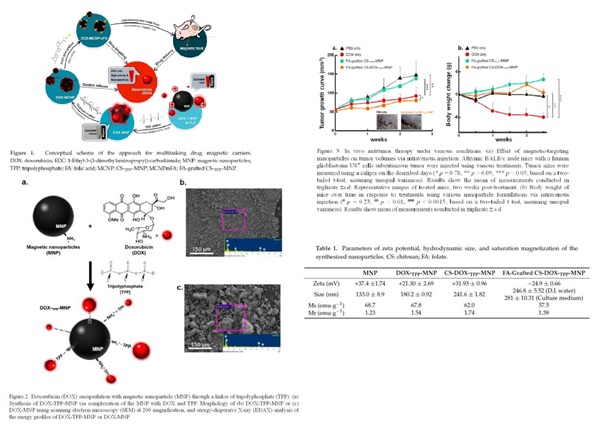
Tao-Tsung Shun
Feng Chia University, Taiwan
Title: MSE-12: Age heat treatments of the CoCrFeNiTi0.3 high-entropy alloy

Biography:
Tao-Tsung Shun received PhD degrees from University of Utah in Metallurgical Engineering at the age of 30 years. He had worked as a senior engineer for 3 years and a researcher for 10 years in Walsin Lihwa Stainless steel Co. and Industrial Technology Research Institute, respectively. Currently, he is an associate professor in the Department of Materials Science and Engineering, Feng Chia University, Taiwan. His present research interests are in developing ductile, high strength high-entropy alloys
Abstract:
Unlike traditional alloys constituted by one or two principal elements, the high-entropy alloys are constructed by at least multi-principal elements, each with concentrations between 5 at.% and 35 at.%. These alloys exhibit good wear resistance, thermal stability, and high-temperature compressive strength, which render them promising for use as tools, molds, die, and furnace parts. Previously, we proposed that the CoCrFeNiTi0.3 high-entropy alloy was promising for the development of a ductile, high-strength alloy owing to its high compressive stress of 1529 MPa and good fracture strain of 0.60. To further understand microstructure evolution as well as the age-hardening phenomena of this alloy, the effects of age heat treatments for 24-144 h at 500-1000 ˚C on the hardness and microstructure of as-cast CoCrFeNiTi0.3 high-entropy alloy were reported in this paper. The results showed that the as-cast alloy displayed a dendritic structure which dendrite was a Ti-lean face-centered cubic solid solution phase (FCC1) and interdendrite consisted of three phases including a Ti-rich face-centered cubic solid solution phase (FCC2) and a mixture of (Ni,Ti)-rich h phase and (Cr,Fe)-rich s phase. After 144 h aging treatment, age-hardening was apparently observed at temperature of 600-800 ℃due to the transformation of FCC2 phase to h+s phases. The optimum hardness was obtained at an aging temperature of 700 ℃which made the hardness increase from HV366 to HV508. However, age-softening occurred at 900-1000 ℃ due to the dissolution of h+s phases. The s phase completely dissolved into FCC1 matrix at 1000 ℃ which brought the alloy hardness to the minimum HV223.

Gi Hong Kim
Kyungpook National University, Republic of Korea
Title: MSE-13: Thermal, mechanical properties of modified poly (lactic-acid) / poly (butyleneadipate-co-terephthalate) blends

Biography:
Gi Hong Kim is a second year doctoral course student in polymer science and engineering at kyungpook national university in republic of korea under professor Kwan Ho Seo. He received his M. S. degree and B. S. degree in polymer science and engineering from the same university. The topic of his PhD research is “Modified PLA materials
Abstract:
Poly (lactic-acid) (PLA) and poly(butylene-adipate-co-terephthalate) (PBAT) are bio-based polymers which aid to replace petroleum-based polymers in future applications. In this study, Biodegradable PLA/PBAT blends were prepared with varying ratio of peroxide, isocyanate, and multi-epoxy groups by reactive blending. The effect of chain-extenders on the thermal behavior, mechanical properties and morphology of the modified PLA/PBAT blends were investigated. Peroxide and isocyanate chain extender were found to be more reactive to PBAT than PLA. But multi-epoxy chain extender was more reactive to PLA. The viscosity change of PLA/PBAT blends was significantly indicated when adding isocyanate or multi-epoxy chain extender whereas the tensile strength and elongation were improved with peroxide or isocyanate. As a result, the compatibility between the PLA and PBAT partially improved in the presence of the chain-extenders and thus it was confirmed that softening of PLA was possible.
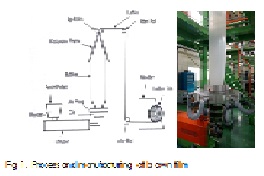
Jin Ho Son
Kyungpook National University, Republic of Korea
Title: MSE-14: Fabrication of poly(ε-caprolactone) (PCL) particles with non-spherical geometries via selective dewetting and deposition of the polymer

Biography:
Jin Ho Son is a first year master course student in polymer science and engineering at Kyungpook national university in Republic of Korea under professor Dong Choon Hyun. He received his bachelor’s degree in polymer science and engineering from the same university.
Abstract:
This paper explains a simple, inexpensive method for the fabrication of non-spherical polymeric particles. This method involves the use of a mechanical rubbing-assisted colloidal crystal to generate a substrate with an array of dimples on its surface, followed by selectively depositing a polymer into the dimples. As a proof-of-concept experiment, we demonstrated the fabrication of poly(ε-caprolactone) (PCL) particles with non-spherical shape. The shape of the polymer particles could be controlled from disk to hemisphere by changing the surface structure and property of the substrate and the concentration of the polymer solution. When functional components including drug molecules and inorganic NPs were used together with the polymer, we could easily obtain the non-spherical particles loaded with the components. In addtion, non-spherical particles with a hollow structure were formed with the use of immiscible polymer blend consisting of PCL and poly(ethylene oxide) (PEO).

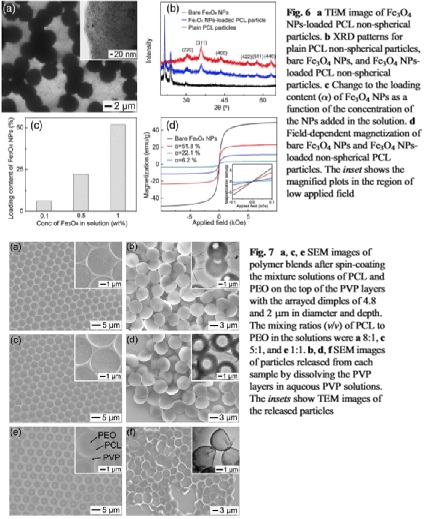
Daniela Rusu
LPIM - Université de Haute-Alsace, France
Title: MSE-15: Innovative superhydrophobic nano coatings for durable applications

Biography:
Daniela Rusu (M.Sci., Ph.D., HDR in Materials Science) is a Polymer Scientist at the Université de Haute-Alsace, Laboratoire de Photochimie et d'Ingénierie Macromoléculaires (LPIM), Mulhouse, France. Her research and teaching activities focuses on multiphase polymer systems (polymer blends, nanostructured materials, gels, composites…), in understanding the processing-structure-properties relationships and tailoring these complex polymer materials for targeted applications (biomedical applications, food packaging, transport, coatings…). Her current research focuses on advanced polymeric materials for coating and biodegradable polymers for medical and industrial applications. She co-authored 10 book chapters and over 100 articles on multiphase polymer systems in different peer-reviewed journals and proceedings. She is an active reviewer for peer-reviewed journals and a scientific expert for EU Framework Program Horizon 2020 for Research and Innovation.
Abstract:
Statement of the Problem: Nowadays, superhydrophobic surfaces (Figure 1) are a hot topic of coatings research, due to their water-repellent and self-cleaning potential, first observed on lotus leaves. Biomimetic artificial coatings intend bringing together the double/multiple roughness of the natural self-cleaning surfaces and a hydrophobic coating that could mimic the wax properties covering the lotus leaves. The roughness of the surface plays an important role in obtaining high contact angles (> 150°); otherwise, it is impossible to exceed angles of 120°. This work proposes an innovative method to produce durable superhydrophobic coating films with self-cleaning features.
Methodology & Theoretical Orientation: This method uses raspberry-like silica-modified nanoparticles (Figure 1) for texturing the substrate surface and it is particularly suitable for thermosensitive and/or transparent surfaces, since the temperature of the coating process remains below 100°C.
Findings: The method comprises several steps: (1) texturing the surface, via deposition of innovative silica-modified nanoparticles of different sizes, (2) crosslinking the textured surface, via a crosslinking agent, and optionally, (3) surface modification by hydrophobic molecules. The coating hydrophobicity can be enhanced by optimizing the preparation process. Preliminary coating tests on transparent substrates confirm the efficiency of the applied strategy: water droplets in contact with such a textured surface are almost spherical, indicating a Cassie-Baster state, where the liquid is in direct contact only with the upper points of the roughness and with air pockets trapped between the liquid and the lower roughness points of the solid coating.
Conclusion & Significance: An innovative strategy for preparing textured superhydrophobic surfaces was presented. This method is inexpensive and simple to apply and it is particularly suitable for industrial applications needing self-cleaning coating features applied on thermosensitive and/or transparent surfaces/materials.

Christelle Delaite
LPIM - Université de Haute-Alsace, France
Title: MSE-16: Random poly (É›-Caprolactone-L-Alanine) by direct melt copolymerization

Biography:
Christelle Delaite is professor at the Université de Haute-Alsace, Laboratoire de Photochimie et d'Ingénierie Macromoléculaires (LPIM), Mulhouse, France. Her research and teaching activities focuse on macromolecular synthesis, (nano)composites elaboration and in the evaluation of the relationship between structure and physical properties of (co)polymers. This work is a collaboration with Slim Salhi who is assistant professor at the Université of Sfax, Laboratoire de Chimie Appliquée, Sfax-Tunisie. His research and teaching activities focuse on macromolecular synthesis, elaboration and characterization of amino-acid biosourced copolymers and chemical modification of polymers.
Abstract:
During recent years, many research works have been directed to the preparation of biodegradable and biocompatible polymeric materials with controlled chemical, physical, and biological properties for a wide range of biomedical applications in the fields of surgical implants, surgical sutures, artificial skin, resorbable bone plates, tissue engineering scaffolds and carrier system for controlled release of drogue and genes.
Various synthetic strategies can be used for the preparation of amino acid-based poly(ester amide)s (AA-PEAs)presenting block, alternating or random structures. Random PEAs can be prepared by simple procedures that do not require the use of solvents or expensive monomers like α-amino acid N-carboxyanhydrides (NCAs). Some studies have reported the synthesis of Random AA–PEAs by the direct reaction of amino acids with cyclic esters or by the direct bulk polycondensation of amino acids and α-hydroxyacids.
The aim of the present work is to study the synthesis and properties of random polyesteramides prepared by the bulk copolymerization of inexpensive É›-caprolactone and L-alanine, using a simple one-step procedure. A series of random polyesteramideswithin a range of molar composition from 90/10 to 50/50 were synthesized by a direct melt polycondensation. Their structure was fully characterized by FTIR and NMR spectroscopy. The resulting copolymers are completely amorphous with the exception of PEA-90/10 which possess a semi-crystalline structure. These PEAs present increasing glass transition temperatures at increasing L-alanine contents, and exhibit fairly good thermal stability with 10 % mass loss temperatures reaching 315°C.
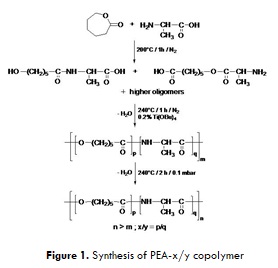
Jee-Woo Yang
Chungnam National University, South Korea
Title: MSE-17: Thermal and humid influence on the interfacial aging of polyurethane coated polyketone fabrics

Biography:
Jee-Woo Yang has her expertise in fiber reinforced composites She is working on improving the bonding performance of reinforcing materials and matrix of fiber reinforced composites. The results of the research on the thermal insulation properties of composite materials have been presented and the analysis model of aerogels also has been presented by her.
Abstract:
This study analyzed the effect of heat and moisture on the polyketone-polyurethane coating system and proposed a predictable relationship based on the analysis.
Polyketone is an environmentally friendly material because it uses carbon monoxide as a raw material and is inexpensive to produce. Also, it has excellent heat resistance, impact resistance, and chemical resistance, and thus is highly applicable to industrial fabrics such as waterproof fabric. On the other hand, polyurethane is a coating material excellent in abrasion resistance, weather resistance and oil resistance in addition to waterproofness. The waterproof properties of the waterproof fabric depend on the occurrence of defects on the coated surface and the adhesion strength between the coating and the fabric. The interfacial adhesion strength that can overcome external forces is determined by the bonding method and bonding force of the lamination system, which affects the life of the waterproof fabric.
In order to improve the durability of the waterproof fabric, polyketone fabric was used instead of the polyester or nylon fabric used in the past, and polyurethane generally used for waterproof coating was used. Environmental impacts, including temperature and humidity, affect the polyketone-polyurethane coating system from the fabric surface. Therefore, the surface properties were observed using SEM, and the hydrostatic head test of the fabric was used to determine the level of defect on the coated surface. Tensile and adhesion strength were tested to determine the mechanical properties of the coated fabric. The chemical changes after aging were qualitatively analyzed using FTIR, and the chemical changes of the polymer network by decomposition were measured from the results of weight reduction. The degree of damage due to the degradation of the coated surface was confirmed by weight loss value according to temperature, humidity and exposure time. The adhesion characteristics of polyketone - polyurethane coating system according to exposure environment were evaluated from the peeling strength results. Also, the behavior of adhesive force could be predicted.
In conclusion, we found that temperature, moisture, and exposure time affect the interfacial adhesion of polyketone-polyurethane coating systems, and the interrelationships were partially confirmed by analyzing the results.
Networking & Refreshment Break 16:30 onwards…@ Pre-Function Space
Day 2 Concludes....
